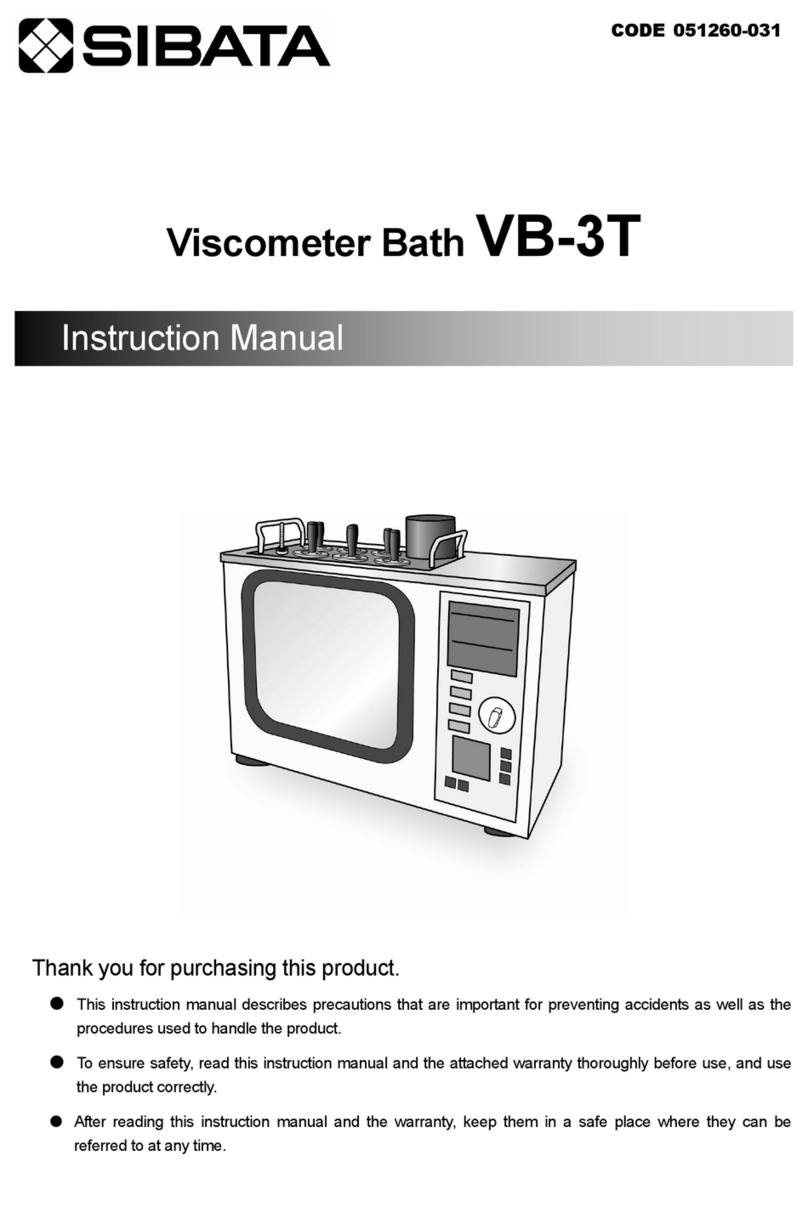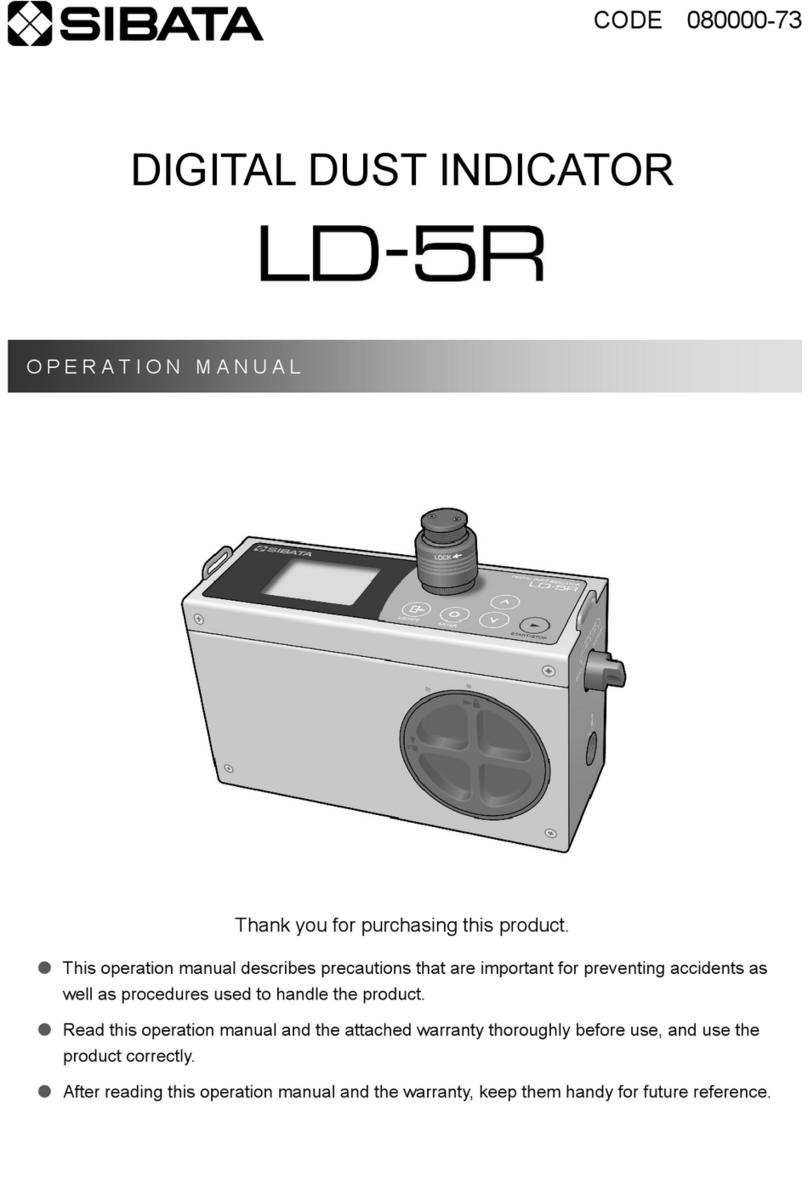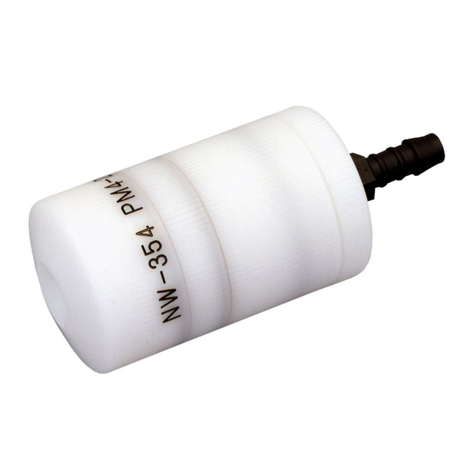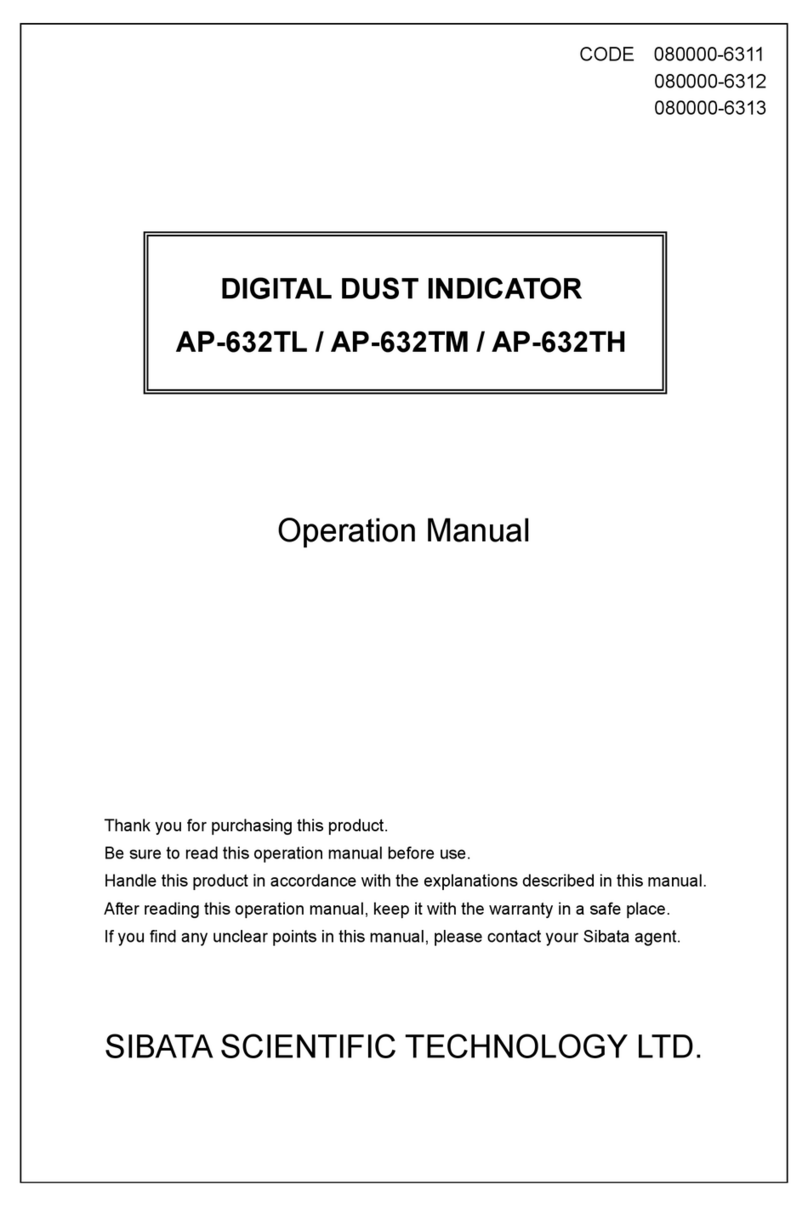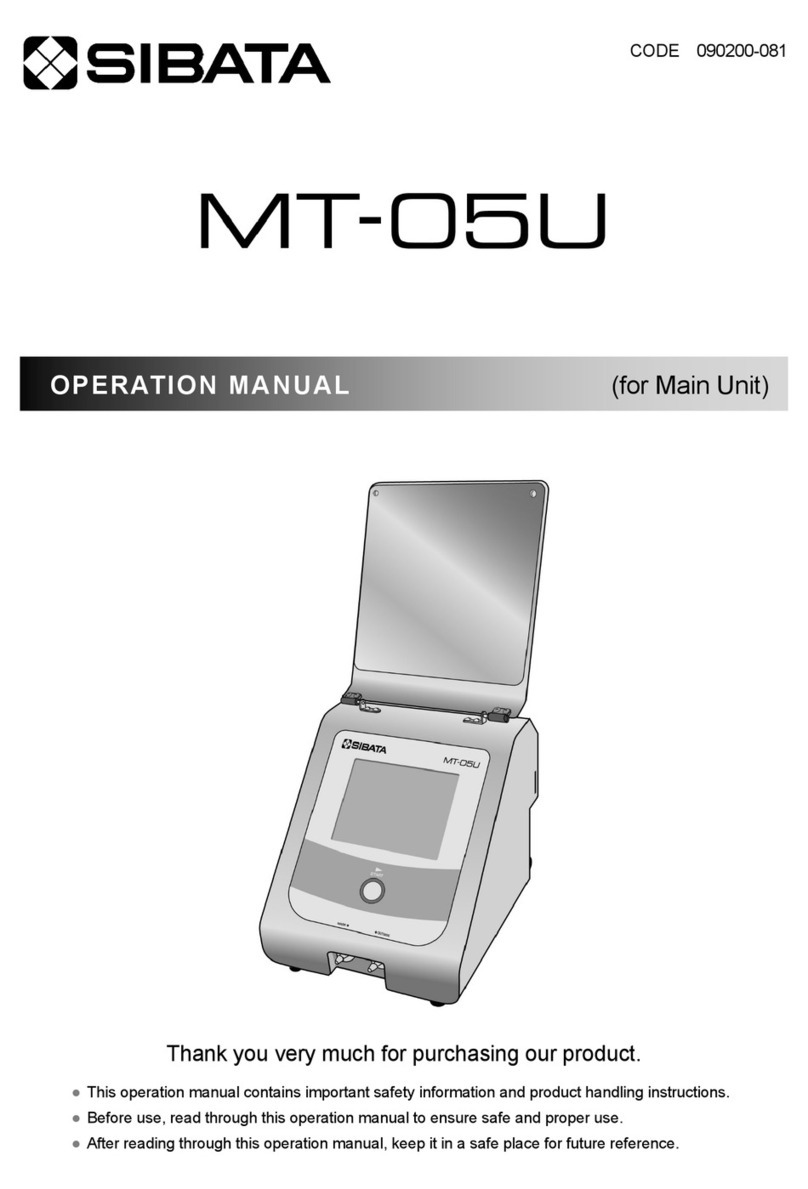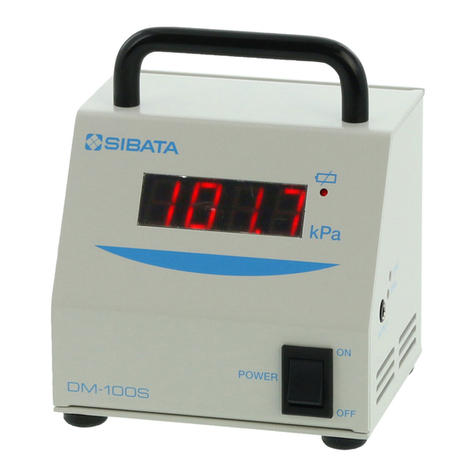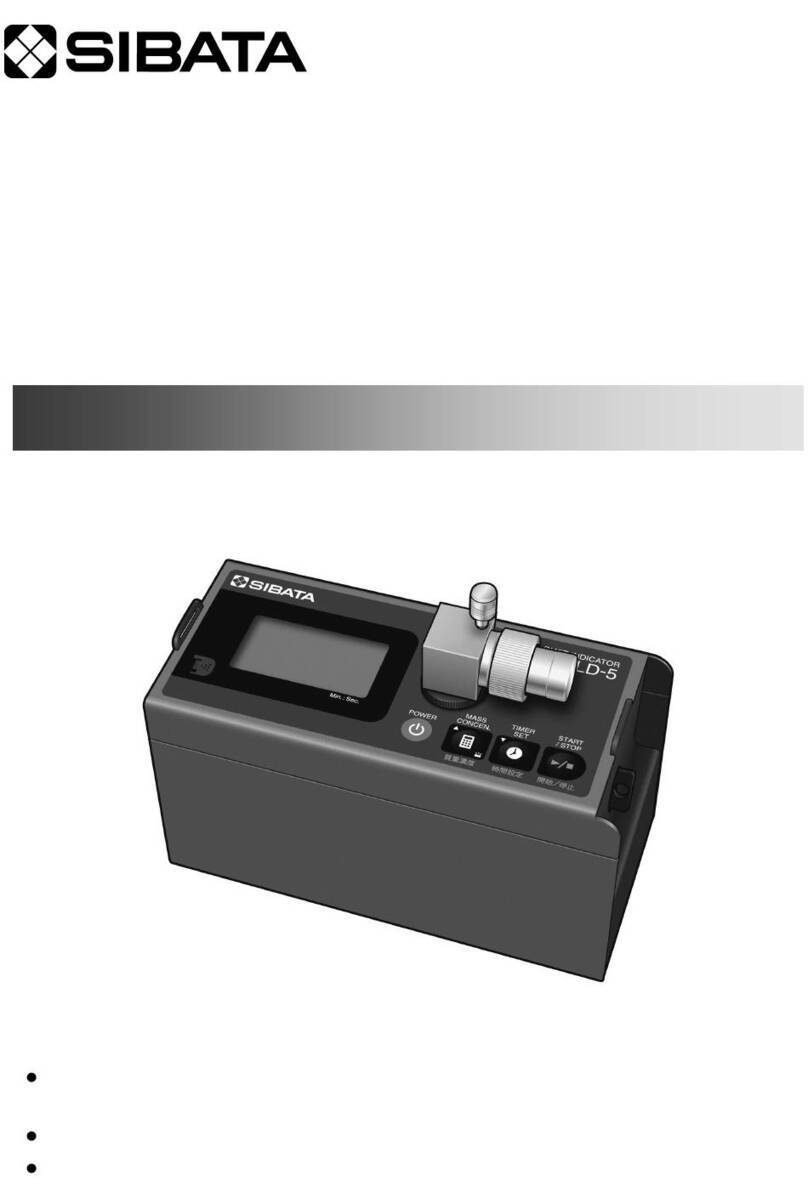
8
About This Product
This product is an easy-to-use handy water
meter.
The test water is colored with a reagent,
and the concentration of residual chlorine
is measured by the amount of transmitted
light. Being compact and easy to handle,
the AQ-201P makes it suitable for use in
on-site measurement.
For a meter in this class, it employs a large,
easy-to-view, original LCD screen so that
just enough information can be displayed.
In addition, it is provided with handy
functions including a memory function for
saving up to 99 measurement values, a
user two-point calibration function, and an
auto OFF function for automatically turning
the power OFF.
The AQ-201P, dedicated to measurement
of residual chlorine, can measure the
concentration of free residual chlorine in
tap water in the range 0.00 to 2.00 mg/L.
The body of sample cells is made of
polyethylene terephthalate (PET).
Names of Parts
AQUAB Body Front
Easy-to-carry, compact body
Auto OFF function
Carrying case handy for carrying around
User calibration mode
Saves up to 99 measurement values
Cell cover
Display
[MODE] key [ZERO] key
[MEAS.] key
Metal strap attachment
Measurement
chamber
Triangle mark
[ When cell cover is open ]
